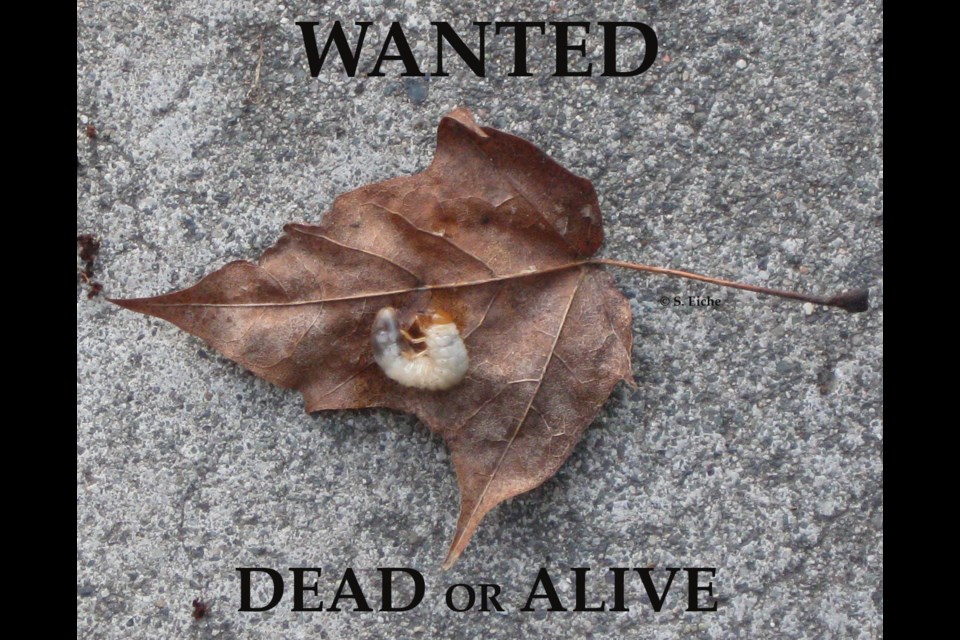Starlings by the dozen land in the front yard. Chaos ensues as they rush about in a disorderly fashion. Their beaks pump frenziedly up and down, leaving a crazy pattern of holes in the grass. In the back yard, a flicker arrives, alone. He works the lawn systematically, puncturing the ground every few inches, like an archaeologist making exploratory probes to find buried walls – except they’re all searching for chafer beetle grubs. When the flicker strikes lucky, he pulls out a grub and slides it into his beak. Sunday evening I watched a huge rat nuzzling its snout into the neighbour’s grass. Later, skunks and raccoons come looking for the same food.
Most people with ransacked lawns condemn the chafer beetle grubs and the creatures that eat them as the baddies. But I believe the fault lies, instead, with the manicured turf lawn, an inviting place for the chafer beetle to lay its eggs and a contributor to environmental problems.
In the Old World, the history of lawns goes a long way back. The word lawn (based on the English “laund,” meaning glade, pasture) is documented by the 1540s in England, where vast stretches of pasture surrounded castles, and a common grazing area was often situated at the centre of villages. In North America, lawns are a recent phenomenon, introduced in residential settings in the 19th century. Their popularity skyrocketed in the early 1950s, when Abraham Levitt ‘manufactured’ Levittown on New York’s Long Island, the original suburban community with ‘cookie-cutter’ houses (erected in 16 minutes), each nestling on its own blanket of grass.
Centuries ago in England, grazing animals kept lawns shorn and fertilised. Today, the same work is done by chemical fertilisers and gas mowers spewing toxic fumes into the atmosphere. Weed whackers and leaf blowers add to the air and noise pollution. As if that weren’t bad enough, leaf blowers kill countless beneficial insects, such as ladybugs, sheltering among the leaves and vegetation. I rake the leaves that fall on the ground, storing them in open bags and bins. When the ladybugs and their larvae crawl out, I transfer them to the garden.
For some years now, homeowners have been encouraged to consider alternatives to lawns, such as low-growing clover or wildflower meadows. One neighbour came up with a brilliant solution. He turned his front yard into one big garden bed, full of flowers and flowering shrubs, mulched with wood chips to protect the soil. Flagstone paths run from the (flagstone) driveway and street to his front door.
Paths can also be made of recycled materials, such as old bricks or broken pieces of concrete. Creeping thyme in the cracks softens hard edges. Or you can create paths with pebbles, as is popular in Tuscany. All allow rain water to be absorbed.
Turning our yards from sterile turf lawns or paved driveways/parking lots into fertile gardens is a tiny step with enormous potential to improve our environment. Let’s give nature a helping hand. We need each other. Badly.
Sabine Eiche is a local writer and art historian with a PhD from Princeton University. She is passionately involved in preserving the environment and protecting nature. Her columns deal with a broad range of topics and often include the history (etymology) of words in order to shed extra light on the subject.



